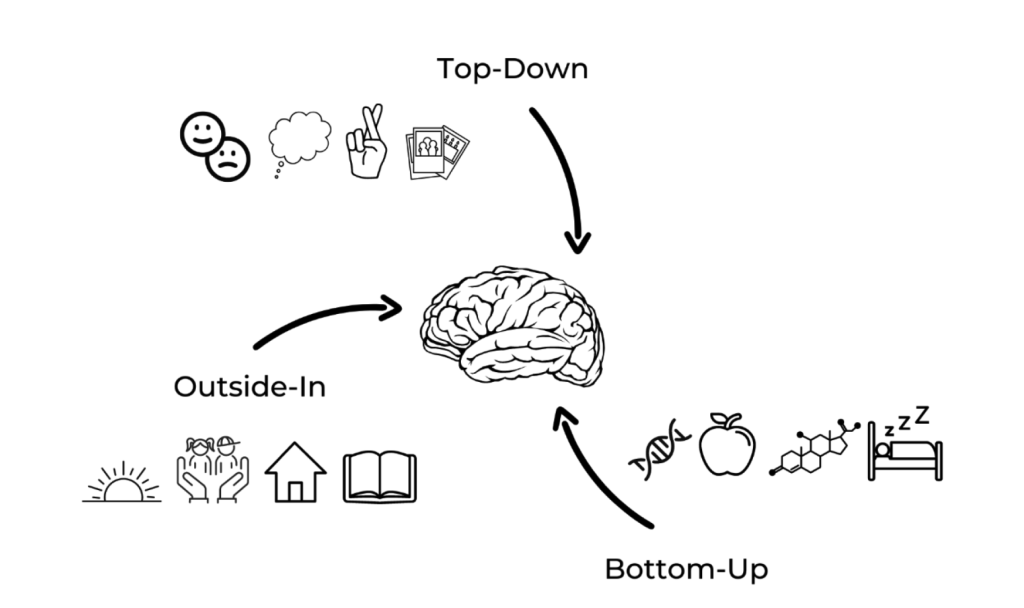
The age-old ‘Nature versus Nurture’ debate is alive and kicking in the world of pregnancy and parenting.
Nature, nurture, or the patriarchy?
Is the intuitive ability to nurture infants written into the female genome? Or is maternal instinct a patriarchal myth designed to keep women locked in the home?
Is oxytocin (literally, the hormone which allows swift childbirth) an absolute requirement for parental empathy? Or can fathers and non-birth mothers learn by doing?
Do women forget because pregnancy shrunk their brain? Or are they so frazzled by the demands of trying to do it all that their attention is torn and they’re too tired to notice?
A simple framework to understand the maternal brain
Because there’s never a straightforward answer or way of ‘ranking’ nature versus nurture, or what matters more or less, I’ve created a useful framework: Bottom-Up, Outside-In, Top-Down model. This framework conceptualises how biology, culture and psychology interact to sculpt our brains.
It’s loosely inspired by the well-known biopsychosocial model, which considers the interactions of biological, psychological and social factors on our health over the lifespan. My framework puts the brain in the middle.

- Bottom-Up elements are the biological or physiological determinants of brain health, development and ageing. Our brains receive constant streams of data about what’s happening inside our body, some of which we’re conscious of (like a full bladder, sore back or kicking baby). Other factors we’re unaware of (like hormone levels or gut pH). Bottom-Up elements include genes, hormones, the immune system, nutrition, exercise, sleep and other lifestyle choices we make.
- Outside-In elements are outside us and make their way
in via our senses (what we see, hear, smell, touch and taste). Outside includes our social circle, the culture we’ve grown up in, the built and natural environment, current circumstances and external stressors. - Top-Down elements include what we think of as our mind – our conscious thoughts, emotions, personality, language, expectations and belief systems.
Applying Bottom-Up Outside-In Top-Down to motherhood
Not only do these many elements regulate the brain’s development, performance and health, but each element interacts with and influences others in dynamic ways.
For example:
- Our Top-Down thoughts can influence our Bottom-Up biology, which is why simply thinking about your baby triggers the breastmilk letdown reflex.
- Outside-In social connections can directly impact Top- Down mood, which is why mothers who lack social support are vulnerable to postnatal depression.
- Bottom-Up pregnancy hormones alter auditory brain networks, which is why birth mothers respond rapidly to the Outside-In sound of a baby’s cries (sometimes waking before they cry, or so it seems).
Is parenting hardwired or learned? Instinctive or experiential? Biological or cultural? Guided by Mother Nature or the patriarchy?
The real story of matrescence probably lies in the glorious mess in the middle.
This is an excerpt from Baby Brain: How pregnancy and motherhood sculpt your brain and change your mind (for the better).
Share the love
[Sassy_Social_Share]
About Dr Sarah
Neuroscientist, Author, Speaker, Director of The Neuroscience Academy suite of professional training programs.
Latest Posts
Free 10 day micro-training in neuroscience

Learn one neuroscience concept a day!
10 simple, bite-sized lessons in brain health, delivered daily to your inbox

